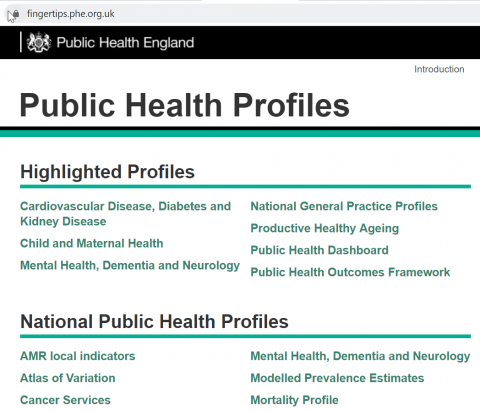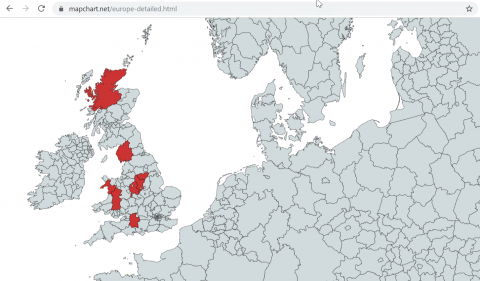The power of data storytelling has proven an effective tool for outreach strategists in recent years. After all, when done right PR stories based on trends in data can achieve tens – even hundreds – of quality links and placements in high authority media outlets.
Equally, done wrong and these outreach campaigns can fall flat on their face. What passes for a story and gains your business an authoritative link in today’s media landscape can change nearly as fast as the news agenda itself. So with top tier journalists receiving hundreds, and sometimes even a thousand or more emails and pitches every day, what steps can digital PRs take to ensure that their data-driven outreach campaigns do not get overlooked?
1. Consider the alternatives
First thing’s first – note trends in the types of articles that your target media tend to publish and consider a different strategy if they rarely carry studies or surveys. Content explorers in tools like Ahrefs let users search for keywords like ‘survey’ in specific domains and also indicate when these types of links are most commonly published. Depending on what’s found, a well thought out PR stunt, interview piece, review offer or influencer campaign may gain better traction. It is also important to consider whether the data is a good match for the brand. Does it tell a story that’s relevant? If not, the publisher may question the connection.
2. Track down authoritative sources
There are several methods for sourcing valuable statistics without having to splash the cash on a market research company for polling data. However internal records (e.g. sales, demand or traffic) and third-party data are among the most common. There are hidden gems to be found in datasets from public sector bodies such as the Office of National Statistics, Public Health England or the DVSA, and professional bodies such as the CIPR also provide useful stats. Alternatively, anyone can make a Freedom of Information Request to public sector organisations for specific records. Authoritative organisations like Statista or Eurostat also offer a treasure trove of useful free datasets.

Even free online tools such as Google Trends reveal when search trends are most popular over a calendar year; while this data itself may not be particularly newsworthy, SEO savvy journalists will appreciate knowing when people are most often searching for terms related to the story being pitched.
3. Stress test the data
Media can’t have confidence in the story if the data is old or from a questionable source. Industries move very quickly. Check the quality of the data itself and ask a colleague, or better yet a trusted media contact, for their thoughts if necessary. Then run one or two calculations to check that the results make sense and seem plausible. Rarely will the media publish a story if the findings appear highly exaggerated or are based on a small or skewed sample (aim for at least 1,000-2,000 records).
4. Slice it up
Sketch out a plan for breaking down data and stick to it to avoid getting stuck down a rabbit hole. Successful data storytelling looks for changes in behaviour or demand around significant events that grab media headlines in the industry. Depending on the business and target media, this could be anything from an international sporting event or big film release to the latest political or celebrity scandal.
Try breaking down the records you have by demographics too. This is often one of the fastest and easiest ways to source hidden gems. New angles can also be found by matching up different datasets via common fields using the VLOOKUP function in Excel. The Office of National Statistics, for example, often releases datasets that are broken down by local authority.
5. Write like a journalist, think like an SEO
First, scrutinise the angle like a journalist. Is it newsworthy? Does it say something new? Is that objectively interesting? If necessary, compare it to what’s being published in the target media. Common traps people fall into include writing pitches that are either overtly commercial or repetition of old news stories. Quality journalists can smell brochure copy dressed as a press release a mile off – and rarely run the same story twice.
Also, add links and hyperlinks when writing the pitch and always ask for a link while negotiating coverage. Remember journalists are becoming increasingly SEO savvy and some are reluctant to link. Consider creating innovative content that adds to the outreach story; the key to increasing the link rate is to create assets that will genuinely add value to their readers.
6. Illustrate the bigger picture
Interpreting data frequently results in a lot of commentary. However, no one enjoys reading a wall of text. Visualise the bigger picture through your data storytelling so that journalists can see the hook straight away. Charts, graphs, cartograms, diagrams, league tables and maps can communicate trends in a way that’s easy to digest and are easily made using free tools such as Flourish or MapChart. Without making the pitch busy, consider all of the fonts, colours, imagery, spacing and graphics available to get your message across.

7. Timing is everything
Don’t get sucked into the age-old debate around when’s the best time to pitch. The truth is that this varies hugely depending on the type of media being pitching to. Do the research to find out when they are on deadline and avoid outreaching during these times as the pitch is more likely to get overlooked. In my experience, Tuesday mornings tend to work well while emails sent too close to home time frequently get ignored.
8. Pitch it in like a pro
Make your pitch punchy. Most journalists will only grant PRs a few seconds to sell in whether that’s by phone or email. Even a humdinger of a story can struggle to get traction if it’s not clearly evident or relevant, so make it clear how the story fits their editorial sections or regular slots. It’s also helpful to write the pitch in their house style and highlight why it is relevant to the demographics of their readers.
9. Be an eager beaver
If at first you don’t succeed, it’s fine to follow up once or twice. Persistence pays. Just avoid stalking a journalist to the point where it could damage the relationship – or worse yet they backlist you. If the story is published but without a link, ask for one. Sometimes there will be strict editorial policies that prohibit this. But if you don’t ask, you don’t get!


Leave a Reply